(Click on any of the images to see a larger version.)
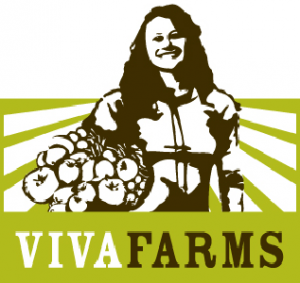 Big agriculture is big business; too big, too distant, too reliant on the latest technology, and too focused on profit over good food.
Big agriculture is big business; too big, too distant, too reliant on the latest technology, and too focused on profit over good food.
Expecting complex technology and genetic engineering to solve the problems of climate change, extreme weather patterns, water shortages, and dwindling supplies of fossil fuels, is not the answer.
It is time to go back to the land, to restore our natural resource base and re-invest in our people.
Re-establishing small, diversified farms and using ecologically smart science at the appropriate scale – back to the future, some would say – is the real business challenge of agriculture in the Pacific Northwest.
The average age of America’s farmers today is 57. Where will tomorrow’s farmers come from as more and more farmers “age out” and retire? It is on the backs of seasonal labor where the American food system rests today and most of those workers are immigrants.
We must find ways to turn farm workers into farm owners and put equity and justice back into the business of farming. That is how we can ensure that we have good food in the future.
Beginning Farmers
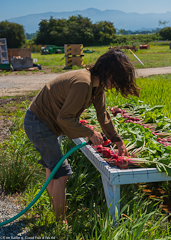
Do a Google search for “beginning farmer programs” and you’ll get 16,000 links; do the same with “farm incubator” and you’ll get more than 12,000 links. Take the quotation marks off each and you’ll get millions. Obviously these are concepts that are capturing attention!
Since January of 2009, when Fast Company – a publication to “create the future of business” – announced that farmer was number one on a list of Ten Best Green Jobs for the Next Decade, more and more young people, and not-so-young people, are working toward new careers in agriculture.
Because sustainable agriculture requires small-scale, local, organic methods rather than petroleum-based machines and fertilizers, estimates project a huge need for millions of new farmers. And those farmers will need to know not only farming skills but also small business skills.
Dozens of colleges and universities now offer courses, certificates, or degree programs focused on organic and sustainable agriculture. But what about beginning farmers that want to get “hands dirty” experience? Training programs like those offered by Farm Beginnings®, a nationally recognized program for new farmers from the Land Stewardship Project, Minneapolis MN; the Intervale Center in Burlington VT; the Big River Farms Training Program for minorities and immigrants, St. Croix MN; and Viva Farms, Mount Vernon WA, give new farmers the information and planning skills they need to get started.
All the training and education available is useless without on the ground experience as an intern, apprentice or farm laborer. There are formal and informal networks that match the farmer-in-training with established long-time farmers. For example, online services like GrowFood and World Wide Opportunities on Organic Farms (WWOOF) connect those wishing experience as interns, apprentices, or work-share students, with hundreds of farms and farmers.
Interns and apprentices may work several years – some as long as 10 – on various farms learning farm production and management skills, but where do they go to take the next step? What is the path to farm ownership? Going from farm worker to farm ownership means overcoming many challenges.
Incubating Farms
By definition “beginning farmer” programs are designed to help people get into farming. Training provides basic skills in production, farm planning, sales and marketing, and general business management. Most of the training and education programs assist in placing new farmers as interns or in work share partnerships, few focus on getting beginning farmers on farms of their own.
“Farm incubators” – similar in concept and practice to general small business incubators that have sprung up in many cities – go beyond classroom or field instruction to leasing land and providing access to the infrastructure and distribution needed to create a productive farm.
Big River Farms, for example, leases land in quarter acre increments, has farm equipment available for lease, and provides necessary infrastructure for produce growers such as irrigation lines, washing and packing shelters, walk-in cooler, storage space in a barn, and the use of a computer and resource desk.
Classroom instruction includes introduction to organic farming, business plan preparation, marketing, and record keeping; in-field classes include weeding, irrigation, cover cropping, pest prevention and management, greenhouse/hoophouse production, and more. All of this is done with the assumption that the student is beginning with minimal knowledge of small-scale vegetable farming.
But what happens when the new farmer has years or even decades of farm worker experience?
(Take a tour of Viva Farms and the Farm Stand here.)
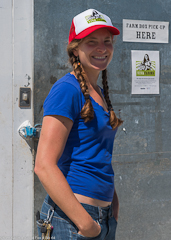
¡ Viva la diferencia !
Sarita and Ethan Schaffer, founders of Grow Food and Viva Farms, know that internships and apprenticeships are a great way to learn farming – they’ve both been farm interns.
“There is a huge abyss between intern, work share, and paid farm worker and actual farm ownership,” says Sarita. “They have spent years learning how to farm, building skills and gaining experience, but without capital it’s tough to try to start a farm.” Young people no longer grow up on family farms and experience the traditional path to ownership.
By putting together a unique set of skills, including fluency in Spanish and experience funding small farmers through a microfinance organization in Paraguay, where Sarita studied as a Fulbright scholar, the Schaffers have build a program that gives workers with prior farming and/or farm management experience the opportunity to lease – and then ultimately buy – their own farms.
What is it that differentiates Viva Farms?
Unlike farm incubators designed for beginning farmers, the program requires farming experience, a commitment to farming as a primary occupation, and a written business plan for the new farming venture. Clearly participants need to be ready to take the next step to full-time farm production.
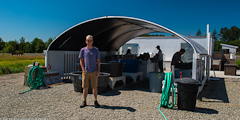
Viva Farms offers education and training in Spanish and English because immigrant farm workers, even those with a great deal of farming knowledge, are likely to have a language barrier. At the same time, the business-oriented classes are designed to help immigrants understand American business culture, which can be quite different from their native cultures. These classes also help with how and when to hire additional workers, navigating Washington Department of Labor & Industries regulations, understanding payroll taxes, and how to communicate with suppliers and buyers.
Combining a collaborative approach to equipment and infrastructure with mutual support, Viva Farms provides these farm start-ups with farm equipment, irrigation systems, greenhouses, and processing facility and cooler on a “time share” leasing program.
Equipment is leased by the hour and other infrastructure charges are based on acreage or spaced used. Keeping these charges and fees separate from the land lease builds a cost model that allows each farmer to know what his/her costs are against production. It’s possible then to know at what point it is more cost effective to invest in a new tractor, for example.
Viva Farms is also experimenting with a variety of “outsourced” business services. Shared services such as human resources and employee benefit management, IT support, contract farm workers, sales and marketing support, product distribution, and financial management and bookkeeping are all areas where Viva Farms staff will work for – and with – the farmers.
Marketing and Distribution
Beginning farmers – and growers with farm experience – often find marketing their products very difficult; after all, they are farmers not “marketers.” Marketing as a practice and function is described as:
- The strategies, activities, and processes for creating, communicating, delivering, and exchanging products or services that have values for customers, clients, partners, and society at large.
- Helping farmers sell their products is just one part of the marketing function, and while Viva Farms has a variety of channels through which it helps participating farmers sell their products, Sarita and Ethan do much more.
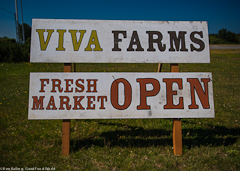
At the first and simplest level, Viva Farms sells fruits and vegetables at a large farm stand on the property. Much of the produce sold at the farm stand comes from outside the farm incubator. By using the farm stand to test the market for products that can be grown on site, the farmers will be spared the false starts and failures that often plague start up operations. Unfortunately to provide a “full service” produce selection at the farm stand, Viva Farms buys a range of products from local organic distributors that includes citrus, mangos, papayas and other products not grow in the Pacific Northwest.
Recognizing that there is a limited market in Skagit County (population 120,000), Viva Farms partners with another organic farm to provide products to Growing Washington, a non-profit that operates The Local Choice Food Box subscription delivery service. To serve the Seattle metropolitan market (population 3.5 million), partnerships are essential.
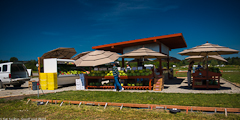
Viva Farms is much more than a farm incubator; Viva Farms Company, is a non-profit wholesale and distribution company that buys from the incubator farmers to supply wholesale, restaurant, institution, food bank, and subscription delivery markets.
The next step is to develop and operate a processing facility, and Viva Farms has signed a lease for a space in which to build out cleaning, cooling, and packaging lines. No value-added processing is on the calendar for the immediate future, though Sarita says, “We’re looking into a community kitchen. It’s hard to design both functions in the same space; the kitchen is hot and wet, and the processing facility will include cooling. We don’t know if that level of value-added shouldn’t be done closer to the city.” Ready-to eat minimal processing like chopped vegetables and romaine hearts, as well as production of sauces and vinegars are being tested now with a new partner.
Defining Success
Measuring success can sometimes be difficult for farm incubators and beginning farmer programs. There are so many variables that contribute to success or failure of a small farm: the crops grown (high value or low), the diversity of the operation, which markets are served, and the overall costs including labor – all affected by the weather variations.
Because Viva Farms farmers are independent businesses, the organization can apply both subjective and objective measures to determine success.
- Subjective measures include understanding of pest, weed and soil management
- Business metrics are scaling up acreage and revenue or increasing profit on the same acreage
Sarita and Ethan Schaffer are compiling valuable information that will help growers understand how to profit with sustainable farming methods. Viva Farms will collect more data over the next five years to compare top performers with bottom performers and show what it takes to succeed in today’s highly competitive market.
The Schaffers and Viva Farms don’t pretend to have the answer for everybody everywhere, however practitioners are discovering that many of their applications are directly transferable to other areas of the country.
It takes time, patience, hard work, and above all – the development of good supportive relationships!

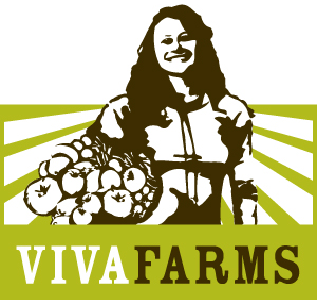
Thanks for the intersting article. I stumbled upon it looking for information about Geoffrey Moore http://www.geoffreyamoore.com author of Crossing the Chasm. Oddly enough, I somehow think that the concepts of Geoffrey’s book and bringing a new resurgence to farming can coorelate. It is awesome that Viva Farms is taking an innovative approach to farming by incorporating launguage classes. Anyway, just thinking outloud. I’m glad I found your article. Thank you again.
Rick,
You’re exactly right. It was when Sarita talked about the “abyss” that existed between internships and actual ownership that Moore’s book came to mind.
I believe on another level – the business level – that good food has reached the same chasm as technology. The early adopters – the super greens, so to speak – have already adopted organic, local, whole food, while the mainstream majority has not yet.
Keep the conversation going!
Gail N-K
Co-Publisher
GoodFood World